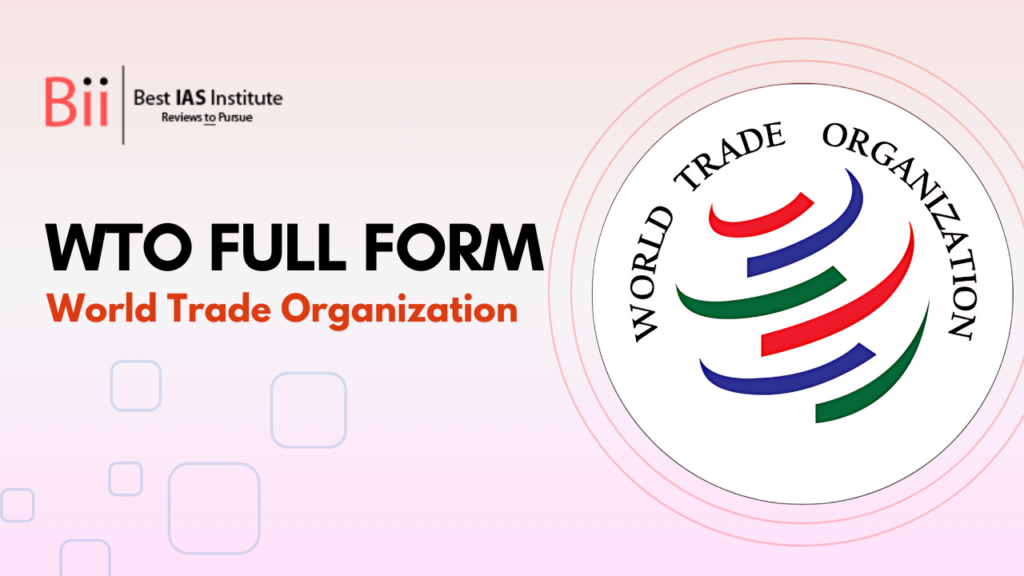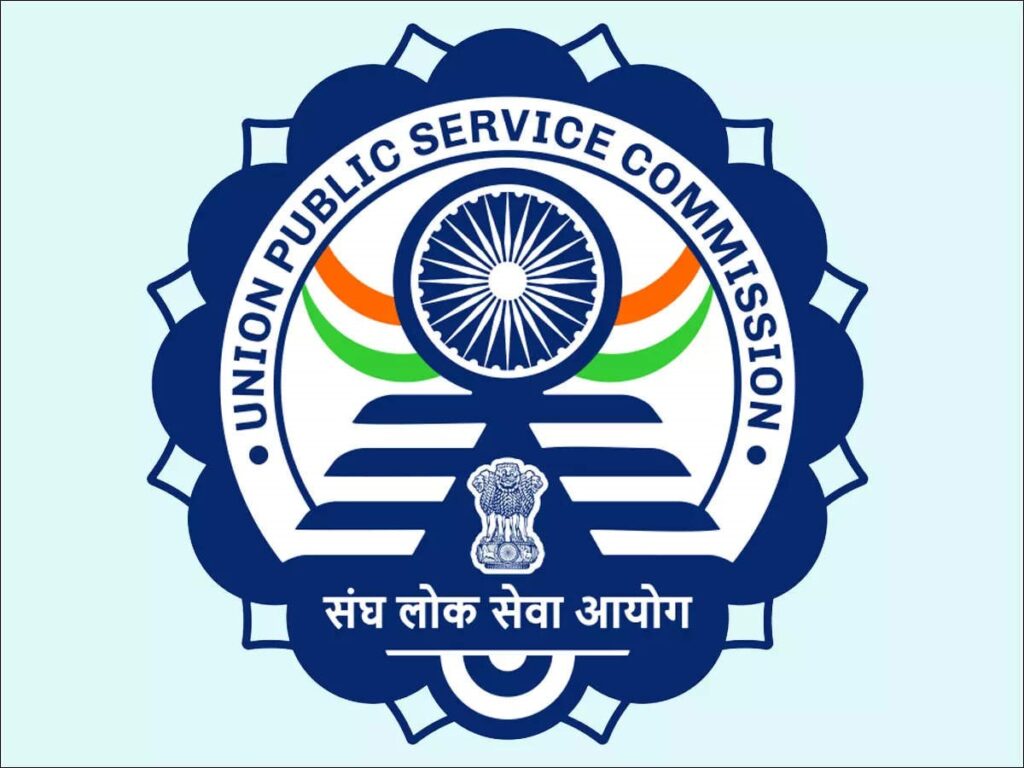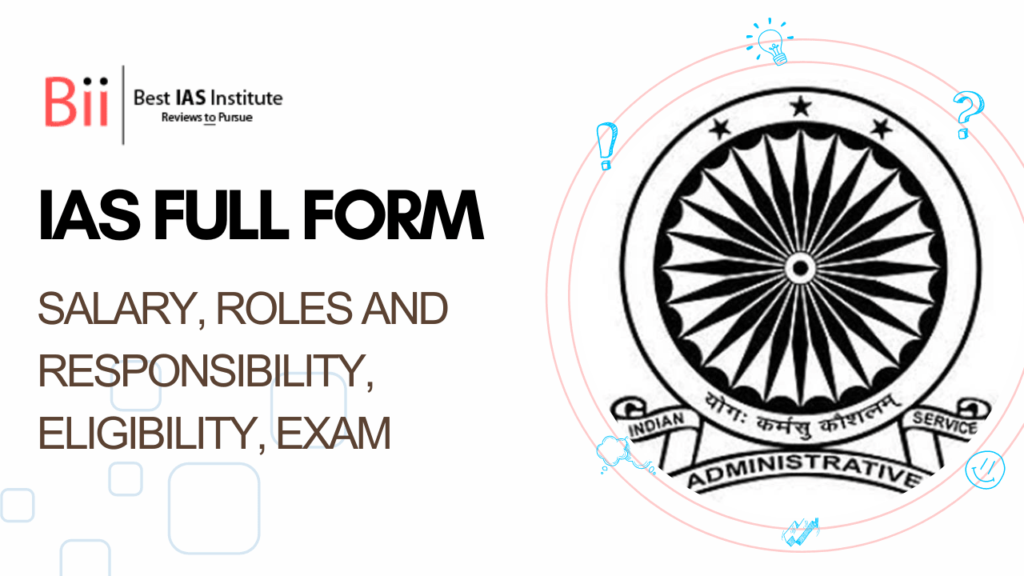
What is the WTO Full Form?
WTO stands for World Trade Organization which is an international organization established to regulate and regulate global trade. It facilitates communication between member states to reduce trade barriers, resolve disputes related to trade agreements, and ensure compliance with international trade rules. WTO aims to promote economic development, growth and stability by promoting fair and transparent trade priorities among member states.
| WTO Full Form Overview | |
| WTO Full Form | World Trade Organization |
| WTO Full Form in Hindi | विश्व व्यापार संगठन |
| Established Year | 1948 |
Meaning of World Trade Organization (WTO)
The World Trade Organization (WTO) is an international organization established to regulate and liberalize international trade. It provides a forum for the negotiation of trade agreements, the settlement of disputes between member states and the enforcement of trade laws. Its primary objective is to facilitate smooth and predictable trade relations between countries, and to encourage economic growth, employment and growth worldwide.
Origin of World Trade Organization (WTO)
The World Trade Organization is the root of the General Agreement on Tariffs and Trade (GATT), established in 1948 to regulate international trade and reduce trade barriers In 1995, the successor to GATT, The World Trade Organization was officially established.
These reforms introduced radical changes, expanded trade rules, and strengthened dispute settlement mechanisms among member states. The establishment of the WTO was intended to provide a comprehensive monitoring mechanism for global trade and promote economic cooperation among nations.
Objectives of World Trade Organization (WTO)
The Following are the World Trade Organization (WTO) several main objectives:
- To Facilitate international trade by reducing barriers such as tariffs and tariffs.
- To Ensure fair competition among member states.
- To Provide a place to negotiate commercial agreements and resolve disputes.
- To Encourage economic growth, especially in developing countries.
- To Increase transparency and predictability in global marketing strategies.
- To Promote sustainable development and environmental protection along with trade liberalization in WTO.
- Follow the principles of non-discrimination and reciprocity in business relations.
- To coordinate member states to address the emerging trade issues and challenges.
The WTO aims to create a stable and transparent business environment that benefits all participating countries which may promote economic growth and contribute to global growth.
Structure of World Trade Organization (WTO)
The World Trade Organization (WTO) has 164 members accounting for 98 percent of global trade. There are 25 countries that are in the process of applying for membership. Decisions are made by all members. This is usually done by consent. Majority voting has also been an option, but never implemented under the WTO’s predecessor GATT All member parliaments have ratified WTO agreements. The biennial WTO Ministerial Meeting is the highest decision-making body in the WTO.
Functions of World Trade Organization (WTO)
The Following Functions of the World Trade Organization (WTO) are diverse and crucial in the regulation of international trade which is given in detailed summary below:
- Business communication: The WTO provides a platform for member states to conclude trade agreements aimed at reducing barriers to international trade and these negotiations cover a wide range of areas from taxes and grants to infrastructure and intellectual property rights.
- Dispute Resolution: One of the main functions of the WTO is to settle disputes between member states over alleged violations of trade agreements and this process is facilitated by the Dispute Settlement Body (DSB), which provides a structured approach to resolving disputes through mediation and arbitration.
- Commercial analysis and monitoring: The WTO monitors the trade policies and practices of member countries to ensure transparency and compliance with agreed rules which includes reviewing national, collecting data on trade flows, and regularly reviewing trade policy.
- Technical Support and Capacity Building: The WTO provides technical assistance and programs to help developing countries participate more effectively in international trade and it includes training programmes, workshops and consultancy services aimed at strengthening the capacity of organizations and enhancing management-relevant knowledge.
- System Analysis: To promote more consistent and predictable global trade relations, the WTO periodically reviews the trade policies of member countries which is reviewed and serves as a platform for constructive dialogue between Member States and helps identify areas for policy improvement.
Roles and Responsibilities of World Trade Organization (WTO)
The following are the Roles & Responsibilities of World Trade Organization (WTO);
- Trade negotiations: Facilitating contacts between member states and creating favourable trade conditions to reduce trade barriers.
- Dispute settlement: providing a forum for the settlement of disputes between Member States involved in commercial transactions, ensuring compliance with agreed rules.
- Trade controls: monitoring national trade policies and practices to ensure transparency and compliance with international trade agreements.
- Capacity Building: Helping developing countries build their entrepreneurial capacity through technical assistance and training programmes.
- Policy Reviews: Conduct periodic reviews of member countries’ trade policies to create more consistent and predictable global trading relationships.
- Partnering with other organizations: Partnering with other international organizations to address broader economic and development issues affecting global trade.
World Trade Organization (WTO) Impact on India
The World Trade Organization (WTO) has had a huge impact on India and this has opened up new avenues for trade by reducing barriers and promoting global integration. India’s accession to WTO agreements has boosted exports, especially in the IT, pharmaceutical and agriculture sectors but concerns about agricultural subsidies in developed countries affecting Indian farmers are needed to strike a balance between trade liberalization and protection of domestic infrastructure necessitates policies to maximize returns.
WTO Full Form in Various Fields
| Field | WTO Full Form |
| Science | Wide-Field Telescope Observatory |
| Technology | Web Tools and Techniques Organization |
| Medicine | Warfarin Therapy Optimization |
| Education | World Teachers’ Organization |
| Finance | World Tax Organization |
| Environment | Water Treatment Operator |
| Military | Weapons and Tactics Officer |
| Law Enforcement | Witness Testimony Officer |
| Transportation | Weight and Trailer Optimization |
| Space Exploration | Weightless Training Opportunity |
Conclusion
The World Trade Organization (WTO) stands as the main organization that organizes global trade relations and by striving to reduce barriers. WTO creates an atmosphere of fairness and cooperation between countries Despite criticisms and challenges, its role in economic growth, development and improvement of security.
As we move into an increasingly interconnected world and the WTO’s mandate to ensure that trade benefits all member states equally remains crucial which is embracing the principles of transparency, inclusion and mutual respect, the WTO is serving as a cornerstone for prosperity and opportunity around the world.
FAQs
Q1- What was the WTO established?
A- The WTO was officially established in 1995, succeeding the General Agreement on Tariffs and Trade (GATT) which began in 1948.
Q2- How does the WTO resolve trade disputes between countries?
A- The WTO resolves disputes through a structured process involving consultations, panels, and if necessary, appellate review. This ensures that countries adhere to international trade rules.
Q3- Can non-member countries benefit from the WTO?
A- While non-member countries cannot directly benefit from the WTO’s agreements or dispute resolution mechanisms, they are often affected by global trade norms set through the WTO.
Q4- What are some criticisms of the WTO?
A- Criticisms include the perceived dominance of wealthier nations in decision-making, inadequacies in addressing the needs of developing countries, and concerns over environmental and labor standards.
Q5- How does WTO promote trade between developing and developed countries?
A- The WTO promotes trade between developing and developed countries by providing more favorable terms to developing countries and helping them build their trade capacity through technical assistance and training programs.



